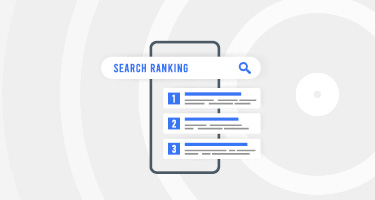To navigate today’s ultra-competitive digital space, law firms need to go beyond basic SEO tactics to stand out. The one strategic key to making your law firm emerge at the top among peers is competitor analysis for legal SEO.
By carefully studying what rival firms are doing, you can uncover opportunities to refine your own SEO approach, improve search rankings and increase online visibility. In this article, we’ll explore how you can use legal competitor analysis to optimize your SEO strategy, improve rankings and drive traffic.
What is Competitor Analysis in Legal SEO?
A thorough SEO competitive analysis for a law firm involves examining the strategies used by peer firms to achieve higher rankings for targeted keywords. By analyzing these tactics, you can pinpoint areas where your firm can outperform the competition.
For a law firm competitor analysis, SEO is a crucial tool for uncovering valuable insights into successful techniques and identifying opportunities to improve your strategy. By leveraging this knowledge, your firm can better target relevant search terms, create high-quality content and enhance both on-page and off-page SEO.
Identifying Key Competitors
Before analyzing competitors' SEO tactics, you need to identify who your real competitors are in the digital space. The key is to focus on law firms that are ranking high for keywords that are most important to your practice area and location. These competitors might not always be the biggest firms, but those performing well in specific niches or regions.
How to Do Competitor Analysis for a Law Firm
- Use SEO Tools: Tools like Moz, SEMrush and Ahrefs are essential for identifying which firms are ranking for your target keywords. Input the relevant keywords (e.g., "personal injury lawyer [city]" or "corporate law firm [region]") and these tools will show you the top-ranked law firms for those searches.
- Manual Searches: Perform Google searches with your practice area’s most important keywords. Check which firms consistently rank on the first page and note the patterns in their SEO practices.
- Practice Area Specificity: Your competitors should also be ranked according to their practice areas. For example, a firm specializing in criminal defense law in New York will have different competitors than a firm that focuses on estate planning in California.
Analyzing Competitors’ SEO Tactics
Once you’ve identified your competitors, the next step is to dig into SEO competitor analysis for your law firm. By studying what’s working for them, you can uncover the methods that are driving them to the top of search rankings—and figure out where they may be falling short.
Key Areas to Focus On
To conduct a successful law firm SEO analysis, focus on the following key areas.
On-Page SEO
On-page SEO involves optimizing the visible elements of a website that affect search rankings:
- Keywords: Analyze the keywords that competitors are using in their meta titles, headings and throughout their content. Are they targeting long-tail keywords? Do they focus on local SEO by including city or region names?
- Content Structure: Pay attention to how competitors organize their content. Are they using subheadings, bullet points or numbered lists? A well-structured page with informative content can boost SEO performance significantly.
- User Engagement: Look at the user experience (UX) elements on competitors’ pages, such as internal linking and calls to action, which can reduce bounce rates and improve rankings.
Off-Page SEO
Off-page SEO focuses on external factors that contribute to a site’s search ranking:
- Backlinks: One of the most critical factors for SEO success is the number and quality of backlinks pointing to a competitor’s site. Tools like Ahrefs can help you see where competitors’ backlinks are coming from. High-authority backlinks from legal directories or industry publications can greatly improve SEO.
- Social Signals: Check if competitors are sharing their content across social media platforms, which can contribute to off-page SEO and generate additional traffic.
Technical SEO
Technical SEO ensures that your site functions optimally for both users and search engines.
- Site Speed: Fast-loading sites are ranked higher by Google. Use tools like Google PageSpeed Insights to see how your competitors’ sites perform and identify areas where you can do better.
- Mobile Optimization: With a significant portion of legal searches happening on mobile devices, ensure your site is mobile-friendly and compare this with your competitors.
- Security: Google favors secure sites (those with HTTPS), so ensuring your site is secure can give you an edge over competitors who might not prioritize security.Understanding Competitors’ Content and Keyword Strategies
In any SEO strategy, content is king, but the deep analysis of your competitor's content really may shine a light on how they attract and eventually engage, an audience. A good competitor research strategy for a law firm is to understand the type of content that works for other firms and how you can adopt similar tactics while adding in your unique voice.
Key Content Areas to Focus On
When analyzing competitor content for SEO, focus on the most influential areas that drive traffic and engagement, such as blog posts, practice area pages and keyword usage.
Blog Posts
Many law firms use blogs to build authority in their practice areas. Look at how often competitors are blogging, what topics they cover and how they structure their posts. Do they write in-depth, long-form articles or focus on shorter, more frequent updates?
Practice Area Pages
These pages are critical for law firm SEO competitive analysis. Analyze how competitors structure their practice area pages. Are they using long-tail keywords? Do they provide in-depth content with clear calls to action?
Keywords
By using tools like SEMrush, you can see which keywords competitors are ranking for. Identify gaps in their keyword strategy that your firm can exploit, such as underutilized keywords or keywords with less competition.
Capitalizing on Competitors’ Weaknesses
While studying your competitors, you’re likely to find areas where they fall short. This is where you can gain a competitive edge. For example, a firm might rank well for certain keywords but have a slow website or outdated content. These are opportunities for your firm to outperform them in specific areas.
Key Weaknesses to Target
By focusing on specific weaknesses in your competitors’ SEO strategies, you can find opportunities to outperform them and improve your firm’s search rankings. Check for:
- Outdated Content: If competitors haven’t updated their blogs or practice area pages recently, your firm can create fresh, authoritative content to outrank them.
- Technical SEO Gaps: Poor mobile optimization, slow page speed or missing security certificates are all common issues that negatively affect rankings. Ensure your site is technically sound to capitalize on these gaps.
- Keyword Gaps: Some firms may be missing out on important long-tail keywords or local SEO opportunities. Identifying and targeting these can quickly improve your rankings.
Replicating Competitors’ Successes
In addition to finding weaknesses, a legal competitor analysis process also helps you discover what’s working well for other law firms. Replicating competitors’ successes doesn’t mean copying them but rather adopting similar strategies and improving upon them. Look into:
- Content Creation: If a competitor’s blog posts or practice area pages are consistently ranking well, consider why. Are they producing high-quality, long-form content? Are they targeting specific local SEO keywords? Adapt their approach, but ensure your content adds value and provides a fresh perspective.
- Backlink Strategy: If your competitors are gaining backlinks from legal directories or publications, look for opportunities to earn backlinks from similar sources. Outreach to legal blogs or industry sites with your own high-quality content to build credibility and authority.
Actionable Next Steps for Law Firm SEO
To make the most of legal SEO competitor analysis, your firm should follow a structured approach:
- Identify Competitors: Use tools like SEMrush and Ahrefs to find top-ranking law firms in your practice areas.
- Analyze Competitor Tactics: Look at on-page, off-page and technical SEO elements, focusing on keywords, backlinks and user experience.
- Leverage Weaknesses: Spot gaps in competitors’ SEO and capitalize on them—whether through improved content, faster page speed, or better mobile optimization.
- Replicate Successes: Take note of competitors’ successful strategies and adapt them to your firm’s SEO efforts.
Maximizing Your Law Firm’s SEO Through Competitor Analysis
Competitor analysis is key to improving your law firm’s SEO strategy. By identifying competitors’ strengths and weaknesses through competitor analysis for legal SEO, you can make strategic decisions that increase visibility, attract clients and drive growth.
Ready to enhance your SEO? Start by optimizing your legal directory profiles—an essential step in improving your online visibility. Download our free checklist to get started.
































